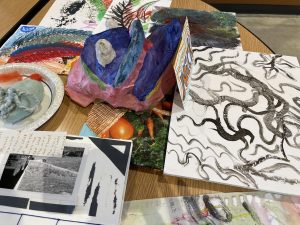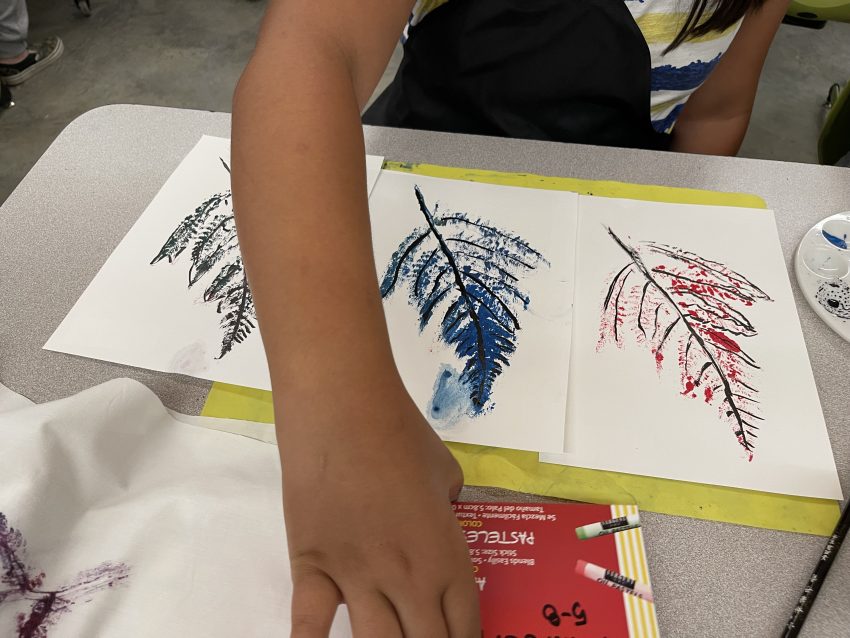As the 2024-2025 school year begins, thousands of students in rural Oregon will have access to arts and STEAM education through the Sitka Center for Art and Ecology’s K-8 Create program. This marks a significant expansion, bringing the program to 17 schools across nine districts and providing monthly arts lessons to more than 5,000 Pre-K through 8th grade students, many of whom have limited or no access to arts education.
Sitka Center for Art and Ecology Executive Director, Alison Dennis, is hoping to further expand the program,
“We are thrilled with the launch of K-8 Create, as the centerpiece of our youth programming, but we believe there’s so much more to be done in serving the next generation of Oregonians. This is just the beginning of our mission to serve a greater and more diverse population of people and we are supported in that, thanks to our partnerships with forward-thinking school leaders who are committed to addressing the gap in arts access for rural Oregon students.”
Founded in 1970, the Sitka Center for Art and Ecology is a Pacific Northwest institution known for immersive art and nature experiences. Originally established as a camp for kids, Sitka has expanded its reach over the past five decades, fostering a unique environment where artists and scientists can work and teach while being deeply immersed in nature. The center, located at Cascade Head in Otis, Oregon, now offers K-8 Create as the centerpiece of its Youth Program, with a mission to bring arts education to underserved rural communities.
Dennis said the K-8 Create program’s growth is a direct response to the significant lack of arts opportunities in Oregon’s rural schools, where budget constraints often leave the arts out of the curriculum.
“We’ve been hearing from local schools that they don’t have the resources to provide high-quality arts education,” Dennis said in a recent Think Out Loud podcast. “We’re working to fill that gap and give students the opportunity to express themselves through art.”
The youth program, which began in 2020 after Sitka assumed stewardship of programs previously run by the Community Arts Project, initially served 500 students in Tillamook County. As of this year, it will reach students in nine school districts, including:
- Knappa School District: 216 students
- Warrenton-Hammond School District: 483 students
- Astoria School District: 725 students
- Jewell School District: 76 students
- Seaside School District: 715 students
- Neah Kah Nie School District: 135 students
- Tillamook School District: 1,020 students
- Nestucca Valley School District: 380 students
- Lincoln County School District: 1,243 students
The program primarily serves students in Title 1 schools, where 95% qualify for free or reduced-price meals, and a significant portion of families face housing insecurity. Instructors, along with guest artists and ecologists, visit classrooms throughout the academic year, offering age-appropriate lessons that combine hands-on projects with art literacy.
“We curate our lessons to meet the needs of each age group, but what’s really special is how these lessons bridge generations,” said Leeauna Perry, youth program director at Sitka. “A kindergartner and an eighth-grader can work on the same lesson but take away different elements based on their level of understanding and creativity.”
One of the program’s hallmark projects involved world-renowned cellist Altea Narici, who collaborated with students to create visual representations of sound. “The students would listen to animal vocalizations, draw spectrograms, and Altea would play their drawings back to them on her cello,” Perry said.
For many students, K-8 Create offers their only access to arts education. Dennis and Perry both emphasized the transformative power of art for low-income and marginalized students. Perry shared a story of a third-grader who found a way to talk about his family’s housing insecurity through an art project.
“When I look at that, I think about why I was late today,” the student said, referring to a piece on homelessness. “I was choosing what to keep because next week I’ll be living in my car.”
The program’s impact has been felt throughout the region. Toledo Elementary’s principal noted that on days when Sitka’s instructors visit, no students are sent to the office for disciplinary issues. “They don’t want to miss art,” she said.

Funding for the K-8 Create program comes in part from Youth Development Oregon through a Youth Promise grant, though additional funding is needed to support its continued growth. Sitka hopes to expand its outreach even further in the coming years, aiming to bring high-quality arts education to more rural communities across Oregon.
“Our goal is art for all,” said Perry. “We want every rural Title 1 school in Oregon that wants a program like ours to have access to one.”
For more information about the Sitka Center for Art and Ecology and its programs, visit sitkacenter.org.


